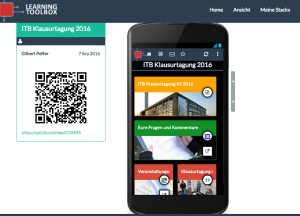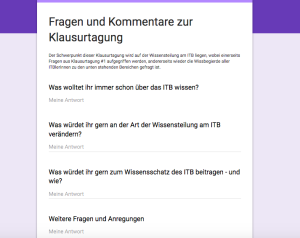Wrapping up the Learning Layers experience – Part One: Digital transformation as lived practice
During the last four years I and my colleagues have been working in our EU-funded Learning Layers (LL) project. Now we are in the phase of drawing final conclusions and editing the final deliverables. Whilst such a phase easily requires more focused work on particular products – in our cases tool descriptions, impact cards, scenarios, methodology descriptions etc. – it is essential to keep the big picture in our minds. Our project was about introducing new technologies – tools for mobile devices to support access to web resources and to online communication – but not only of that. Most of all it was about changing practices in workplace learning or learning in the context of work. And it is in this context that the project has gone through a long journey and made important experiences. With this post and the next ones I try to revisit our learning journey in the LL pilot in construction sector draw some conclusions and key messages arising from it. In this post I will focus on the overarching theme ‘digital transformation’.
Digital transformation as lived practice
I am aware of the fact that there is plenty of literature on the theme ‘digital transformation’ and that I should do my homework with if I want to use this concept properly. However, given the intensity of our project work, I have come across this theme from the perspective of our fieldwork and in our own processes of work. In this context we have experienced many transitions from earlier modes of work to new ways of using online resources and web-based communication and interaction. A great deal of our research and development work is carried out on web platforms and by using shared resources. And if we use traditional e-mails, then mainly when sending out group mails for wider target groups. Furthermore, when developing new online tools, such as the much discussed Learning Toolbox (LTB), we are more and more inclined to find ways to use for such tools in our own work – not only in the pilot fields. Altogether, my perspective on the topic ‘digital transformation’ is primarily that of manifold step-by-step changes in everyday life as lived practice.
Digital transformation as precondition for/aim of a R&D project
Shifting the emphasis from our everyday life as project partners into our field of piloting – the construction sector – we need to take a broader perspective. Indeed, there have been many speculations on automation and new technologies making skilled workers redundant – or cautious statements on the limits to digitisation in construction work. To be sure, the true picture is probably characterised by an ongoing change between the extreme poles. But how to grasp the real picture of changes in construction sector?
Looking back at the earliest interviews in the project, we learned a lot of the infant diseases of several ‘new technologies’ that didn’t work properly or didn’t reduce the workload of construction professionals. Likewise, we heard of several stand-alone apps that were advertised for construction sector, but were not good enough for professional use (or didn’t promote learning at work). So, in the further work we needed to keep an eye on real innovations that made a difference to our application partners and improved the quality of working life. Here we found ourselves in a similar position as the researchers studying the early automation processes in the 1970s and 1980s. As the German researcher Rolf Nemitz formulated it: ‘So far, the studies on automation have focused on, how automation can replace or reduce human contribution. However, the real innovation lies in combining automation and human potential.’ Or, as the founders of our institute – Institut Technik & Bildung (ITB) – took this further: the contribution of research is to equip practitioners with capability for social shaping (Gestaltung) of work, organisations and technology. However, the researchers of that time were talking about production technologies, not about present-date technologies and new media to promote learning at work. Now we have been facing new challenges.
Digital transformation as a research theme and as transformative practice
In the light of the above, for us the topic ‘digital transformation’ has not been merely a research them to be dealt with via academic contemplation, empirical observations and testing designs for learning technologies. For us, the understanding of digital transformation can only arise from processes of working with the application partners and for changes that enhance them as pioneers for innovations in construction work. In this context I hear the echo of the words of young Karl Marx in his Theses on Feuerbach: “The coincidence of the changing of circumstances and of human activity or self-changing can be conceived and rationally understood only as revolutionary practice.” (Marx/Engels Selected Works, Volume One, Progress Publishers Moscow, 1969). Or in original version: “Das Zusammenfallen des Ändern[s] der Umstände und der menschlichen Tätigkeit oder Selbstveränderung kann nur als revolutionäre Praxis gefaßt und rationell verstanden werden.” Marx-Engels Werke, Band 3, Seite 5ff. Dietz Verlag Berlin, 1969).
Here, in our context, we could interpret this classical phrase as referring to digital transformation as a coincidence of changing circumstances and changing self-understanding of actors as an interactive and transformative process. Thus, it is not enough to document the changes as observable facts or to record the self-understanding of practitioners as their testimony. Instead, a real understanding of such processes arises from experiencing the changes as efforts of change agents and sensing changes in their views on, what to pursue and how to make it work. In this way in-depth research has to be involved in the transformative practice, but has to maintain its ability to reflect on the practice.
– – –
I guess this is enough for introductory thoughts. In my next posts I will take a closer look at the role of research and training activities in the project. Then, later on, I will discuss issues on ‘showing impact’ and ‘drawing scenarios’.
More blogs to come …


